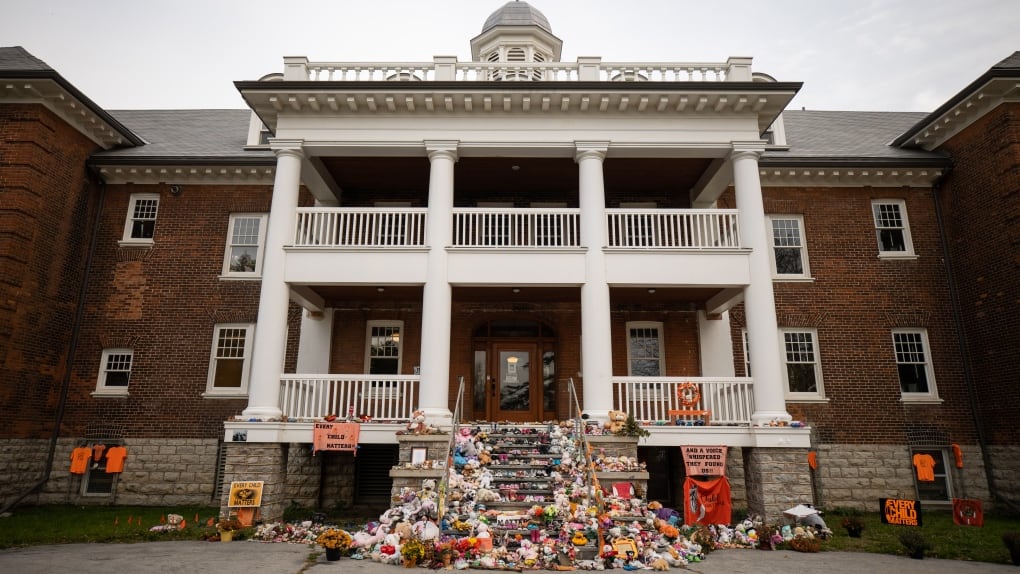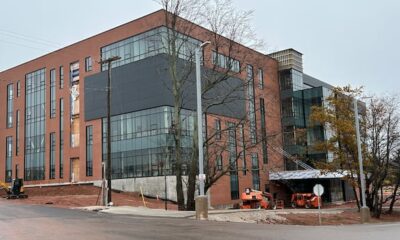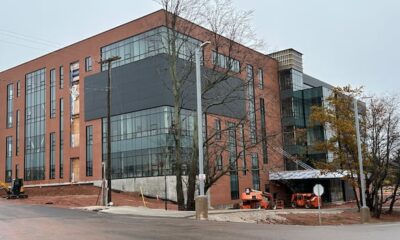Education
Former Residential School in Canada Transforms for Reconciliation

A former residential school in Brantford, Ontario, has undergone a significant transformation, evolving into a center dedicated to learning, reflection, and reconciliation. The site, known as St. Andrew’s School, which once served as a residential institution, has now been repurposed to foster understanding and healing within the local Indigenous communities.
The change comes after years of advocacy by Indigenous leaders and community members, who have called for spaces that honor the painful history of residential schools in Canada. According to the Truth and Reconciliation Commission, these institutions were designed to assimilate Indigenous children and have left lasting scars on communities across the nation.
New Beginnings in a Historic Space
Renovations at St. Andrew’s School were completed in early 2023, marking a new chapter for the site. The facility now includes classrooms, meeting rooms, and spaces for cultural programming, all aimed at educating the public about the impacts of residential schools. The Ontario Ministry of Indigenous Affairs has played a crucial role in supporting this initiative, providing funding and resources to ensure its success.
Local Indigenous leaders view this transformation as a vital step toward healing. Chief Kisha Supernant of the Six Nations of the Grand River expressed hope that the new center will serve as a place for dialogue and education. “We must remember the past to build a better future,” she said. “This space will allow us to share our stories and foster understanding.”
The center will also host workshops, cultural events, and educational programs aimed at both Indigenous and non-Indigenous audiences. The intention is to create a welcoming environment that encourages reflection on Canada’s history while promoting reconciliation efforts.
A Commitment to Healing and Education
The repurposing of St. Andrew’s School aligns with broader initiatives across Canada focused on reconciliation with Indigenous peoples. Following the findings of the Truth and Reconciliation Commission, many communities have sought to reclaim and transform spaces that once served as sites of trauma.
In a recent statement, the Ontario Ministry of Indigenous Affairs emphasized the province’s commitment to supporting Indigenous-led initiatives. “We believe in the importance of creating spaces that facilitate healing and understanding,” the statement read. “The new center in Brantford is a testament to our shared journey toward reconciliation.”
As the center opens its doors, it aims to engage with the broader community, inviting participation from people of all backgrounds. This effort reflects a growing recognition of the need for ongoing dialogue about the legacy of residential schools and the importance of building respectful relationships between Indigenous and non-Indigenous Canadians.
The transformation of St. Andrew’s School stands not just as a physical renovation but as a powerful symbol of hope and change. It represents a commitment to confronting the past while paving the way for a more inclusive future. Through education and reflection, the center aspires to foster a culture of understanding that honors the experiences of Indigenous peoples across Canada.
-

 World3 months ago
World3 months agoScientists Unearth Ancient Antarctic Ice to Unlock Climate Secrets
-

 Entertainment3 months ago
Entertainment3 months agoTrump and McCormick to Announce $70 Billion Energy Investments
-

 Science3 months ago
Science3 months agoFour Astronauts Return to Earth After International Space Station Mission
-

 Lifestyle3 months ago
Lifestyle3 months agoTransLink Launches Food Truck Program to Boost Revenue in Vancouver
-

 Technology2 months ago
Technology2 months agoApple Notes Enhances Functionality with Markdown Support in macOS 26
-

 Top Stories7 days ago
Top Stories7 days agoUrgent Update: Fatal Crash on Highway 99 Claims Life of Pitt Meadows Man
-

 Sports3 months ago
Sports3 months agoSearch Underway for Missing Hunter Amid Hokkaido Bear Emergency
-

 Politics2 months ago
Politics2 months agoUkrainian Tennis Star Elina Svitolina Faces Death Threats Online
-

 Technology3 months ago
Technology3 months agoFrosthaven Launches Early Access on July 31, 2025
-

 Politics3 months ago
Politics3 months agoCarney Engages First Nations Leaders at Development Law Summit
-

 Entertainment3 months ago
Entertainment3 months agoCalgary Theatre Troupe Revives Magic at Winnipeg Fringe Festival
-

 Politics1 week ago
Politics1 week agoShutdown Reflects Democratic Struggles Amid Economic Concerns




















